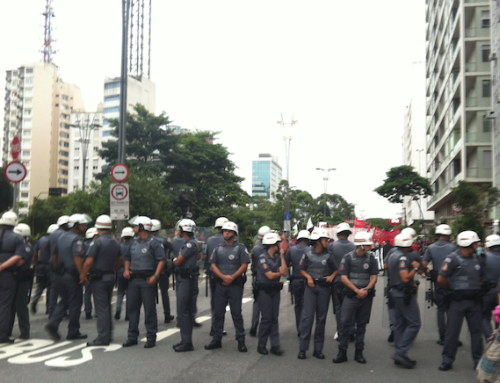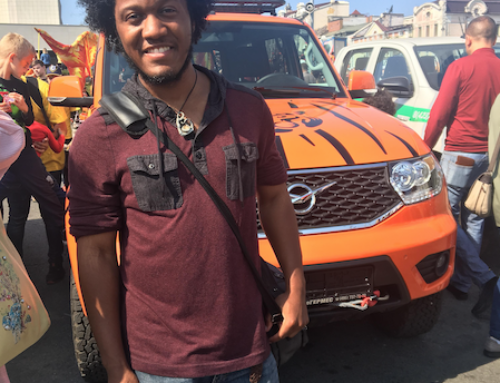I was born on the ocean shore in the far west of France. Attracted to the hectic tides of this deep blue screen ahead of me, I learned how to swim and how to sail. More than twenty years later, I crossed the Atlantic Ocean to conduct a three-year ethnographic fieldwork project in the United States as part of my PhD curriculum in Anthropology.
I had decided to investigate an emerging specialization at the National Institutes of Health (NIH) that focused on the promotion and the conduct of medical research on Complementary and Alternative Medicine (CAM), as well as the concomitant establishment of a new medical specialty, namely “integrative medicine.” Together, these were part of a political effort to tackle the economic crisis affecting the American health system related to cancer and the chronicization of diseases since the late 1980s. I was progressively stepping into a new and unfamiliar milieu animated by evolving collaborations between political representatives, federal agents, clinicians, researchers and patients, but whose inner codes and specific rules of social interaction were beyond my direct understanding and quite distant from my preliminary hypotheses. From my junior researcher perspective, the officiality of my informants’ professional itineraries impressed me: most of them held PhDs and had published extensively in outstanding international journals, some had discovered innovative treatments, and at the time I met with them, nearly all occupied prestigious clinical, research, and/or administrative positions. As sailing the sea requires honing a sharp sense of the fluid mechanics that rule the possible movements of the boat at the interface of air and water, navigating (socially) these networks of actors entailed crafting the right ethnographic toolbox, negotiating a place among them, and above all, adapting a keen eye for the cultural dynamics at stake, in situ and from within. How, in their daily routine, do actors distribute material and symbolic resources, practice, and discourse amongst themselves?
What was a novice ethnographer doing here? Joining this social arena of medical research usually meant that you had previously won your spurs in biomedical science or its administration—that you had gathered enough resources and credentials, which I had not. While the funding of my research by the French National Cancer Institute (2015-18) offered an institutional legitimacy to my request to conduct fieldwork among them, it was not until “the thrust of the encounter” (Schwartz 2012, 68)1 with my gatekeepers that I was able to find stable footing that would allow me to observe and participate: a research position within one of the leading health institutions in the field of medical research on CAM. From this moment my fieldwork really started, but I soon faced a dilemma. I now had access to sensitive and personal data often deemed confidential, and above all, I was considered by my informants as a “colleague.” As a consequence, I was feeling quite uncomfortable setting formal interviews rather than our daily discussions and meetings, and all the more disloyal about recording them or taking pictures of my surroundings. Taking notes seemed more natural and more acceptable, and it was also a way of showing the seriousness of my involvement and my interest in the field as a member. Being equipped with pens and notepads, writing down relevant information, and mobilizing this information to promote debate were routinized aspects of these actors’ daily work, even during one-on-one discussions.
01.01. Geoffroy Carpier, Greenwood cemetery, Brooklyn, NYC, NY. Photo Credit: Carlos Alberto Cancino, 2015
Perhaps I could already grasp the turmoil agitating the field during my first meeting with the group in 2015. When I genuinely shared the recent shift of CAM in medical research from “alternative” and curative treatments to “integrative” adjuncts to conventional care, one of them slightly lost his temper: “All of this is political! […] There is a lot of frustration in this field.” I soon discovered that the fieldwork I was conducting was precarious for at least three reasons:
This was an evolving social space where groups were constantly being reconstituted and restructured, networks of collaborations reorganized and redeployed, and power relations redefined;
Each group and network of actors employed a distinctive and highly political lexicon in order to differentiate itself institutionally from other groups and networks in relation to past controversies;
“[S]liding on (…) the insider-outsider continuum” (Humphrey 2007, 13), I was recognized by some groups as a legitimate member with whom personal thoughts could be shared. Other groups, however, viewed me as a competitor, as an uninteresting bystander, or as a subordinate around whom they should exercise caution.
At this stage of my project, I felt quite lost and my fieldnotes were blurry and messy. Referencing a perpetual hubbub of contradictory positions, they reflected the wavering beginnings of my research itinerary. How could I make sense of this plurality of meanings and experiences in my fieldwork? How could I navigate among these different and competing networks of actors without feeling clumsy or tactless, and at the same time gather enough data?
I was nurturing an inductive approach inspired by grounded theory (Glaser and Strauss 1967) and abductive analysis (Timmermans and Tavory 2014) and I made extensive use of fieldnotes. I organized them within three journals: (1) People, including actors’ professional itineraries, their relationships with other actors or institutions, their publications, and my impressions and feelings about them; (2) Questions and hypotheses, including the thematic issues I wanted to address in situ, the schemes of interactions between actors, and my fluctuating place among them, as well as bits of on-going theorization; (3) Discussions and observations, including shorthand notes, drawings and schemes, and a lexicon of the actors’ terminology. Here I took to heart Michel Foucault’s poignant reflection that “[t]o describe is (…) to see and to know at the same time, (…) it is also to learn to see” (2003 [1963], 140). For me, fieldnotes were not a mere descriptive record of my fieldwork experience, but rather an act of perceiving with words and drawings—a space in which knowledge production and bodily commitment intertwined. As I was fumbling my way along actors’ networks of interactions, I saw my journals more and more like see-through layers that I could play with and interchange, progressively revealing different maps of my fieldwork that I could then test and use.
The NIH. National Institutes of Health, Bethesda, MD. Photo credit: Geoffroy Carpier, 2016.
The ecosystem of my fieldnotes mapped the language and semantics of actors, as well as the practices and webs of collaborations associated with each group and the individual itineraries that weaved in and out between the streams of this collective space. It also gave visibility to the vivid boundary-work operated by actors through the porous frontiers of this social arena and the groups constituting it. In other words, I was “play(ing) along the malleability” of the ethnographic experience (Favret-Saada in Esquerre et al. 2004, 10),2 exploring the game of reciprocal interactions between anthropologist, actors, and their shared environment. With these maps in hand, I could reorient more deliberately my research itinerary, strategize when, where, and how to gather specific data, and then assess hypotheses. Playing with the layers of meanings I drew from my fieldnotes, I could make silences speak in context or address the ethnographically peculiar behaviors I observed. I could also welcome randomness and surprise with more situational insights.The immersion of researchers in the field ultimately challenges their reflexive vigilance. Fieldnotes were the locus in which I made palpable my personal and intimate engagement in the scientific endeavor. Admittedly, I sometimes scratched the pages of my journals with enthusiasm or disappointment, and at times I used strong words to describe misunderstandings or disdain of my interlocutors. I could re-enact the scenes and thus question the relationships between participation and data collection. Most importantly, I could re-interpret my fieldnotes ethnographically, within their own context of production and in a more comprehensive way. “Along (their) grain” (Stoler 2009), fieldnotes materialized my engagement as an itinerary punctuated by “tracers” (2009, 33) of moving relationships and representations in situation between actors and my “colleague”-self. Accompanying me, these fieldnotes served as a reflexive map in my explorations as I endeavored to bring my process of theorization, my ethnographic questionings, and my own epistemological orientation into dialogue with actors’ distinct “landscapes of meaning” (Reed 2011).3 By folding and unfolding these layers of fieldnotes, I reflexively made that translation process between actors and the ethnographer intelligible.4
Notes
[1] From the original French: “l’impulsion d’une rencontre,” my translation.
[2] From the original French: “se prêter aux expériences de malléabilité,” my translation.
[3] Sociologist Isaac Reed defines “landscapes of meaning” as “the layers of meaning in which the social actions under scrutiny are embedded, (a painting) of the meanings—historically located, fabricated by the human imagination—upon which social life proceeds” (2011, 120).
[4] I get my inspiration from the work of Neni Panourgiá: “We tend to rest comfortably on the notion that the project of humanity is to understand the world around us; I would actually argue (…) for the opposite: that we, humans, are trying to make ourselves understood by the world that surrounds us (…). And I would further argue that if that is the project of humanity, then the project of anthropology is to make this translation process intelligible” (Panourgiá 2008, 97).
References
Esquerre, Arnaud, Emmannuelle Gallienne, Fabien Jobard, Aude Lalande, and Sacha Zilberfarb. 2004. “Glissements de terrains. Entretien avec Jeanne Favret-Saada.” Vacarme 28:4–12.
Foucault, Michel. 2003 [1963]. The Birth of the Clinic: An Archaeology of Medical Perception. Translated by A. M. Sheridan. London: Routledge.
Glaser, Barney G., and Anselm L. Strauss. 1967. The Discovery of Grounded Theory. Chicago: Aldine.
Humphrey, Caroline. 2007. “Insider-Outsider: Activating the Hyphen.” Action Research 5 (1): 11–26.
Panourgiá, Neni. 2008. “Fragments of Oedipus: Anthropology at the Edges of History.” In Ethnographica Moralia: Experiments in Interpretive Anthropology, edited by Neni Panourgiá and George E. Marcus, 97–112. Fordham University Press.
Reed, Isaac. 2011. Interpretation and Social Knowledge: On the Use of Theory in the Human Sciences. Chicago: The University of Chicago Press.
Schwartz, Olivier. 2012. Le monde privé des ouvriers. Hommes et femmes du Nord. Paris: Presses Universitaires de France.
Stoler, Ann Laura. 2009. Along the Archival Grain Epistemic Anxieties and Colonial Common Sense. Princeton: Princeton University Press.
Tavory, Iddo, and Stefan Timmermans. 2014. Abductive Analysis: Theorizing Qualitative Research. Chicago: University of Chicago Press.
Dr. Geoffroy Carpier is an Associate Researcher of Anthropology at DySoLab (EA 7476), University of Rouen Normandie. Geoffroy holds a PhD in sociology and anthropology of science (funded by the French National Cancer Institute, INCa) from the same university. He has been a visiting research scholar at NYU’s Department of Anthropology and guest researcher at OCCAM-NCI (NIH). His research in anthropology revolves around ethnographic inquiries of controversial research fields, integrative models in science, and the negotiations of the boundaries of current scientific activities.
Cite As: Carpier, Geoffroy . 2022. “Mapping a Precarious Fieldwork: Fieldnotes as Reflexive Companion” In “Taking Note: Complexities and Ambiguities in Writing Ethnographic Fieldnotes,” edited by Magdalena Zegarra Chiappori and Verónica Sousa, American Ethnologist website, 26 August 2022, [https://americanethnologist.org/features/collections/taking-note-complexities-and-ambiguities-in-writing-ethnographic-fieldnotes/mapping-a-precarious-fieldwork-fieldnotes-as-reflexive-companion]




